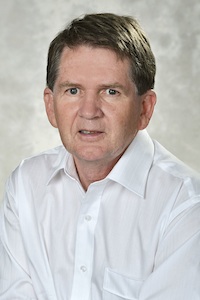With the November, 2014 G20 meeting done and dusted, WOW’s resident historian, Professor Bradley Bowden, and colleague, Dr Andrea Insch (University of Otago, NZ) set about understanding the role of 34 years’ of rebranding strategy in transforming Brisbane into a global city.
But what does this have to do with the world of work you ask!?
‘Second-ranked’ cities make valuable contributions to their region and the global economy. And in a period of (State-wide) employment decline in its traditional industries — mining, manufacturing and agriculture – idle demographical change in the 1970s, and declining population growth in the 1980s, Insch and Bowden show how concrete changes to Brisbane’s character and capacity through its urban transformation campaigns — workforces, education and employment opportunities included – have fostered credibility in the minds of the campaigns’ target audiences.
Using Australian Bureau of Statistics data, State and Brisbane City Council development plans, rebranding campaigns, (credible) public commentaries and academic literature, Professor Bowden notes how by 1986, unskilled employment filled the gaps in a workforce where only one in eight residents remained employed in factories. And as professional firms concurrently relocated to, or merged with, larger entities – usually in Melbourne and Sydney – only 10.8% of the city’s population held tertiary qualifications.
“Points of differentiation are the unique and valued attributes of a brand that establish their superiority against competing cities,” add the authors. “[Existing research suggests] for example, that business owners seeking to relocate…might compare cities that host a workforce with specialised skills. …[So] identifying target market(s) [underpins] a brand’s frame of reference…, the city’s closest rivals, [and] the needs of stakeholders.”
How then did Brisbane set itself apart?
“A transformation in patterns of employment,” says Bradley. “The most significant change occurred in the decade between 1996 and 2006 when the tertiary educated increased their share of the workforce by 73.5 percent. Consequently, five years later (2011) 47 percent of the city’s workforce was tertiary qualified (most notably in education and, more particularly, in the professional, scientific and technical service areas).”
The efficacy of strategies to reposition Brisbane as a global city by hosting the likes of the Commonwealth Games (1982) and World Expo (1988) also saw populations migrate from southern Australian states, and along with them, new investment capital and entrepreneurial skills.
Additional strategies saw Peter Beattie’s long-serving State Labor government (1998-2007) work with the local Council to position its campaigns toward public sector investment, support and tax concessions in an effort to position Queensland as the Asia-Pacific hub of the nanotechnology, IT, communications and biotechnology industries. In turn, tertiary providers took on large expansions – including to their own workforces – to accommodate the increase in demand for education in these fields, and further professional employment opportunities were boosted as Virgin Australia and IBM relocated their national head offices to Brisbane.
While economic development, tourism and event-hosting, affordable housing, international student recruitment, and tertiary education — the city’s largest export market — featured heavily in campaigns of the preceding three decades, Professor Bowden reminds us that:
“The positive outcomes for the city….were associated with focussed [market] positioning approaches…underpinned by government policies and programs,…[particularly resources that] invested in elevating the city’s specialised role in the regional and global economy: job growth…and enhancing Brisbane’s economic and business climate.”
“Brisbane may have however reached the limit or ceiling in its strategic repositioning as it lacks unique and distinctive features enabling it to outperform its [global city] rivals…in the long term.”
This article, entitled ‘Possibilities and limits of brand repositioning for a second-ranked city: The case of Brisbane, Australia’s “New World City”, 1979-2013’, was published in Cities journal (2016, volume 56, pp. 47-54).

